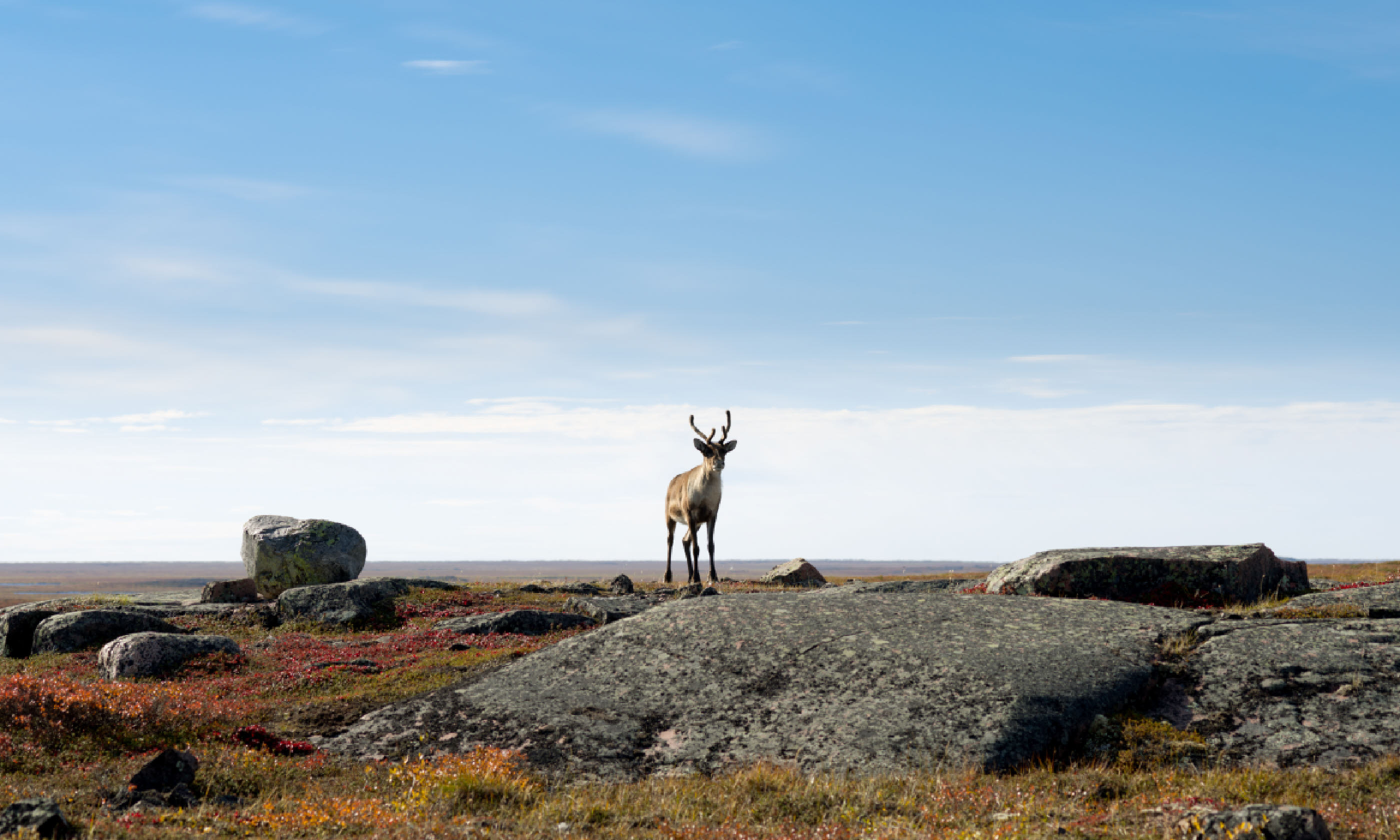
Polar bears, indigenous art – and Facebook? Uncover surprising contrasts on an Inuit adventure cruise in Arctic Canada
When our small ship shuddered and sliced through an iceberg, causing our expedition leader to topple over during the daily briefing, it hit home that this was an expedition, not a holiday. Only the seven young Inuit trainees, all northern natives, looked unconcerned as we made our way through the ice floes of eastern Canada’s Lower Arctic.
Inuit-run Cruise North is not your usual cruise line. Our old Russian ship was not going to win any beauty pageants, while hearty moose stews replaced fine dining.
But who cares? I’d not come for glamour. I was on a ten-day journey from northern Québec to Nunavut during which time I’d be given unrivalled access to local people and their ancient hunting grounds, not to mention getting the chance to experience the region’s best wildlife-spotting.
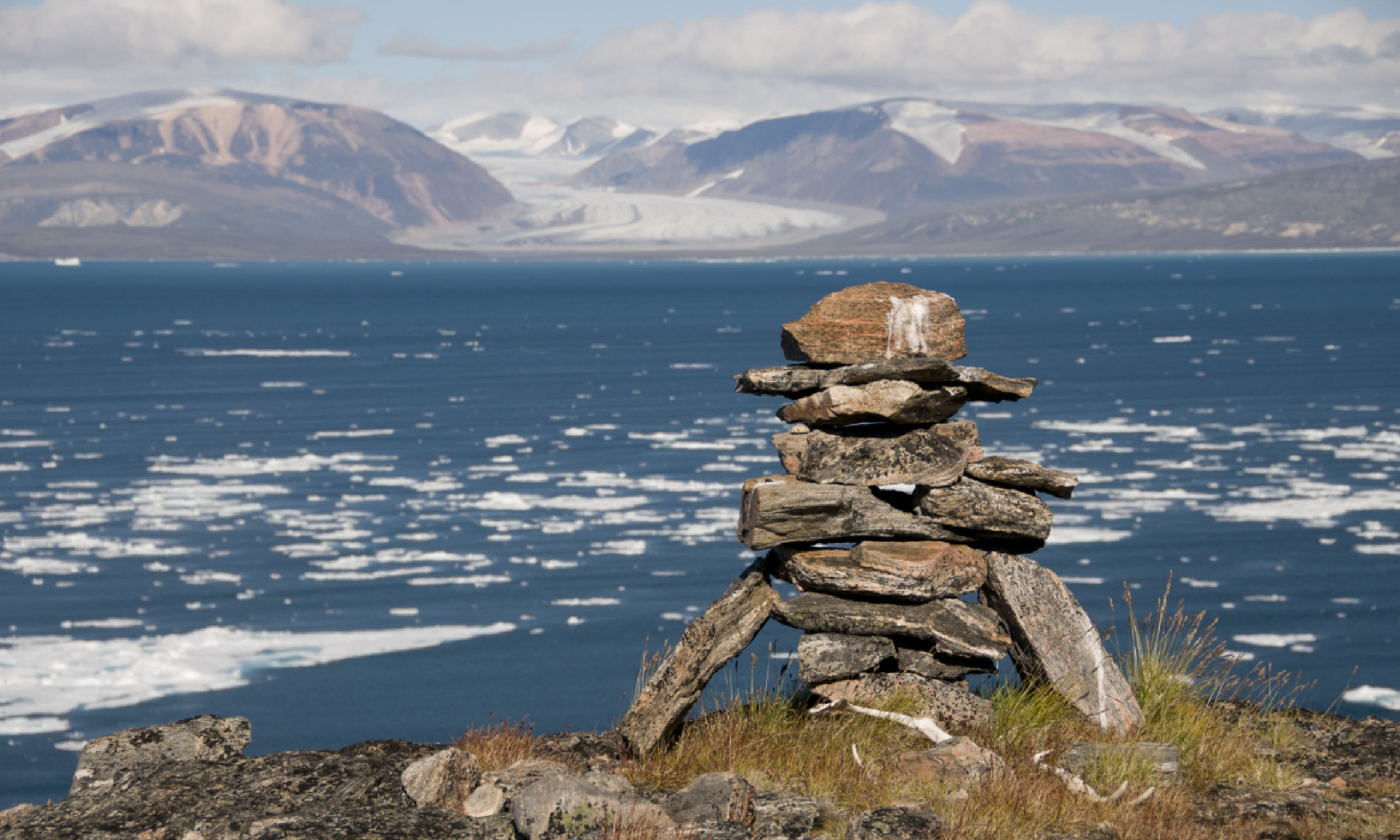
An ancient Inuit inukshuk serves as a landmark for seafarers
It took a three-hour flight north from Montréal to reach our embarkation point in Kuujjuaq, in the Inuit-governed Nunavik region of Québec. The town’s splattering of red, green and blue houses sat amid grey tundra, and as we made our way to join Cruise North’s Arctic Safari a chilly summer breeze shook the white cotton-flowers and carried howls from hilltop kennels.
The adventure didn’t take long to get started. After leaving Kuujjuaq, we had our first glimpse of a polar bear in Ungava Bay, when an eerie ghost ship of an iceberg appeared. As it loomed closer, a hulking yellowy-white bear came into view, dripping blood as it tugged a seal carcass across the blinding ice. It was a grisly yet compelling introduction to life in this remote region.
At 5am the next morning we bundled into Zodiacs for a bleary-eyed visit to Akpatok Island, home of the world’s largest colony of thick-billed murres, birds famous for their spectacular diving skills as they hunt for fish amid the icy water. The boats took us through black clouds of them, billowing out in Hitchcockian proportions as they sought to avoid the glaucous gulls that eyed them from the rocks.
We did most of our sailing at night; by day, land expeditions were a good chance to stretch our legs, with the trainees acting as polar bear monitors, guns strapped to their backs. At Diana Island we bumped into one of the trainee’s cousins, a man called Willie. He was carefully shucking mussels, perched on his umiak (canoe), beached on the shingly shoreline. His boat was overflowing with local boys who’d been learning traditional hunting skills – one teenager munched kelp and poked seal entrails with his hunting knife as he told us he’d recently killed his first polar bear. Halfway through a conversation about the weather, Willie turned and asked: “Hey, are you on Facebook?”
Canada’s north is not the barren, lifeless place you might imagine. Change has been rapid here for the local Inuit people. In less than two generations communities have acquired broadband, shiny Skidoos, and mud-encrusted All Terrain Vehicles (ATVs), while brightly painted houses have replaced a nomadic lifestyle of igloos and dogsleds.
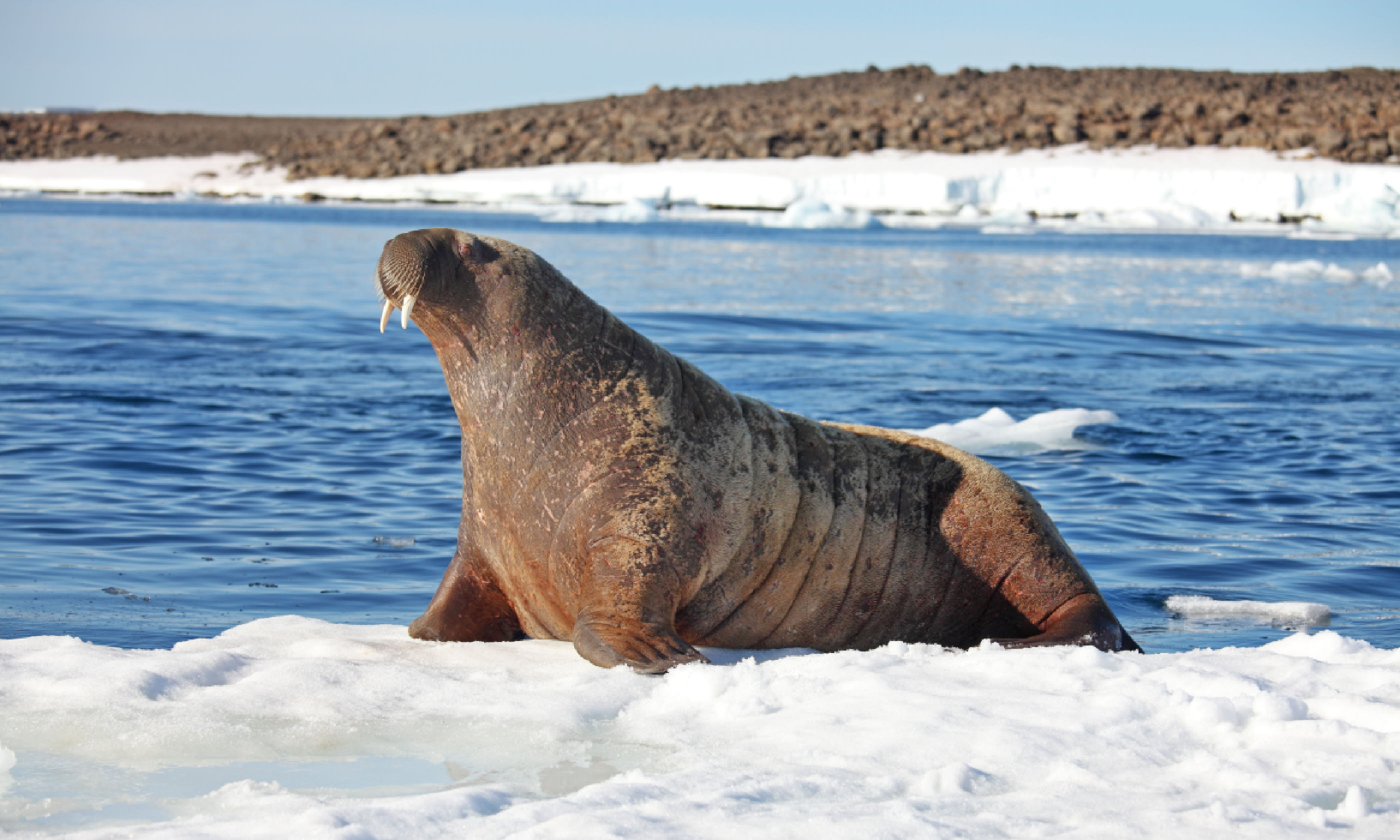
Walrus cow on ice floe (Shutterstock)
But people like Willie make sure the younger generation still learns the old ways. On Diana Island the trainees expertly monitored skittish muskoxen, while we stayed downwind on boggy tundra polka-dotted with tiny white saxifrage flowers and flamingo-pink fireweed. Orange lichen clung like discarded chewing gum to the Canadian Shield rock, which we clambered over just in time to see a small herd flee, honking up the mountainside in a flurry of fur.
As the beasts bolted, so did we, returning south to Nunavik’s mainland. We cruised past the annual cargo ship, piled high with colourful crates of ATVs and household goods, and called at Kangiqsujuaq, an old Hudson’s Bay Company trading post that got its first paved road last year. A local teacher gave us a lesson in the Inuit language, Inuktitut, and told us that climate change is already ringing alarm bells in her classroom: the children can’t understand why books show ice melting in late summer when they can see it’s all gone by June.
In Kangiqsujuaq’s sports centre we munched on bannock (fried bread) with berry jam while two ladies gave us a throat-singing demonstration, clasping each other’s arms and making guttural noises like animal calls. It’s a traditional Inuit game – the first to drop the rhythm loses. Other Inuit games, such as owl hop and one-foot high kick, have a more ferocious edge to them, and are used for conflict resolution, building strength and keeping occupied during winter. Physically demanding games are still important here, even if kids tease each other online about how fast they can seal crawl.
At that evening’s briefing, talk turned to food. Favourites included goose, caribou, seal – and chips. Wild meat is popular: hunter support programmes and communal freezers ensure that even those who can’t hunt can access country foods. Some local delicacies were handed around, including dried char, dried caribou and mattaq – whale blubber. Whales are limited to one per community each year, while a tag system regulates polar bear hunting quotas – some tags can be sold to game hunters for around CAD$30,000.
Sounding and smelling less appetising were the giant Odobenus rosmarus that we spotted the next day at the well-named Walrus Island, in northern Hudson Bay. Hundreds of the leathery mammals grunted on the ice-pocked island. Hauling themselves out of the water they took on a rosy hue as their blood rushed to cool them down – it was easy to see why their Latin name means ‘pink tooth walker’.
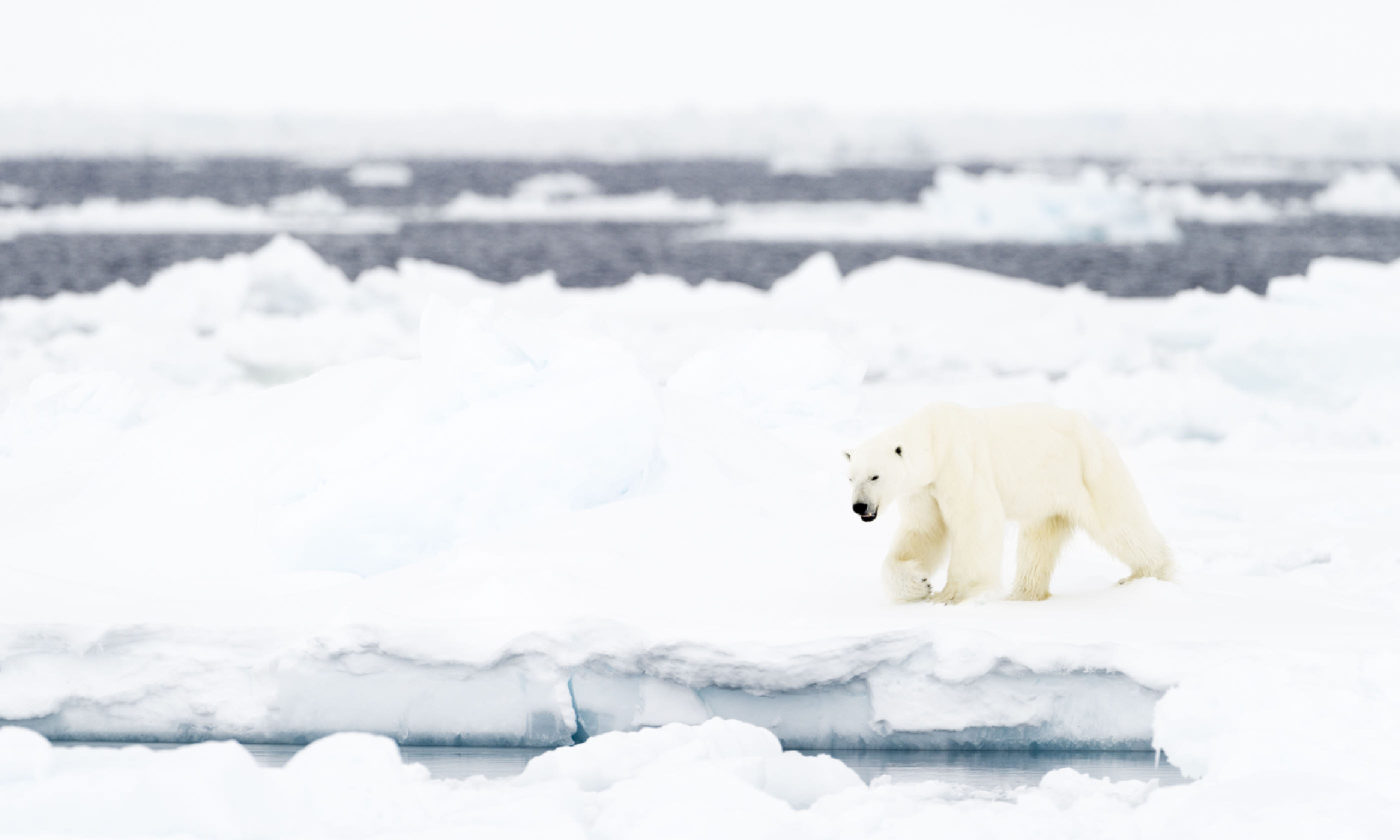
Polar bear in Baffin Bay
Cruising around Baffin Island we called at Cape Dorset, a place made famous as a centre for Inuit art by artist James Houston in the 1950s. Low brooding clouds gave the mountain-ringed town an uneasy air that whispered of social problems and didn’t tally with the beautiful carvings we saw being created, or the striking prints on display in the art co-op.
The art was fascinating, but our expedition team was keen to spot wildlife, so we detoured back across Hudson Strait to the narrow grey fjord of Douglas Harbour to stalk caribou. Here, a rough beach led to rapids peppered with rocks; we carefully picked our way across and climbed over loose stones to reach a waterfall, where a solitary pair of caribou antlers moved across the yawning valley.
Polar bears remained high on everyone’s wish list, so the last two days of the voyage were dedicated to finding more of the gracefully menacing creatures. We cruised back to Baffin Island’s Nannuk Harbour. Nannuk means ‘polar bear’, so this optimistic name – combined with piles of sun-bleached bones and the chirrup of radio alerts – filled us with hope of another close encounter. After an uphill trek over moss-encrusted rocks, powered by the restorative qualities of bittersweet mountain sorrel, we were rewarded with the sight of a bear lumbering leisurely across a patch of ice on the other side of the fjord.
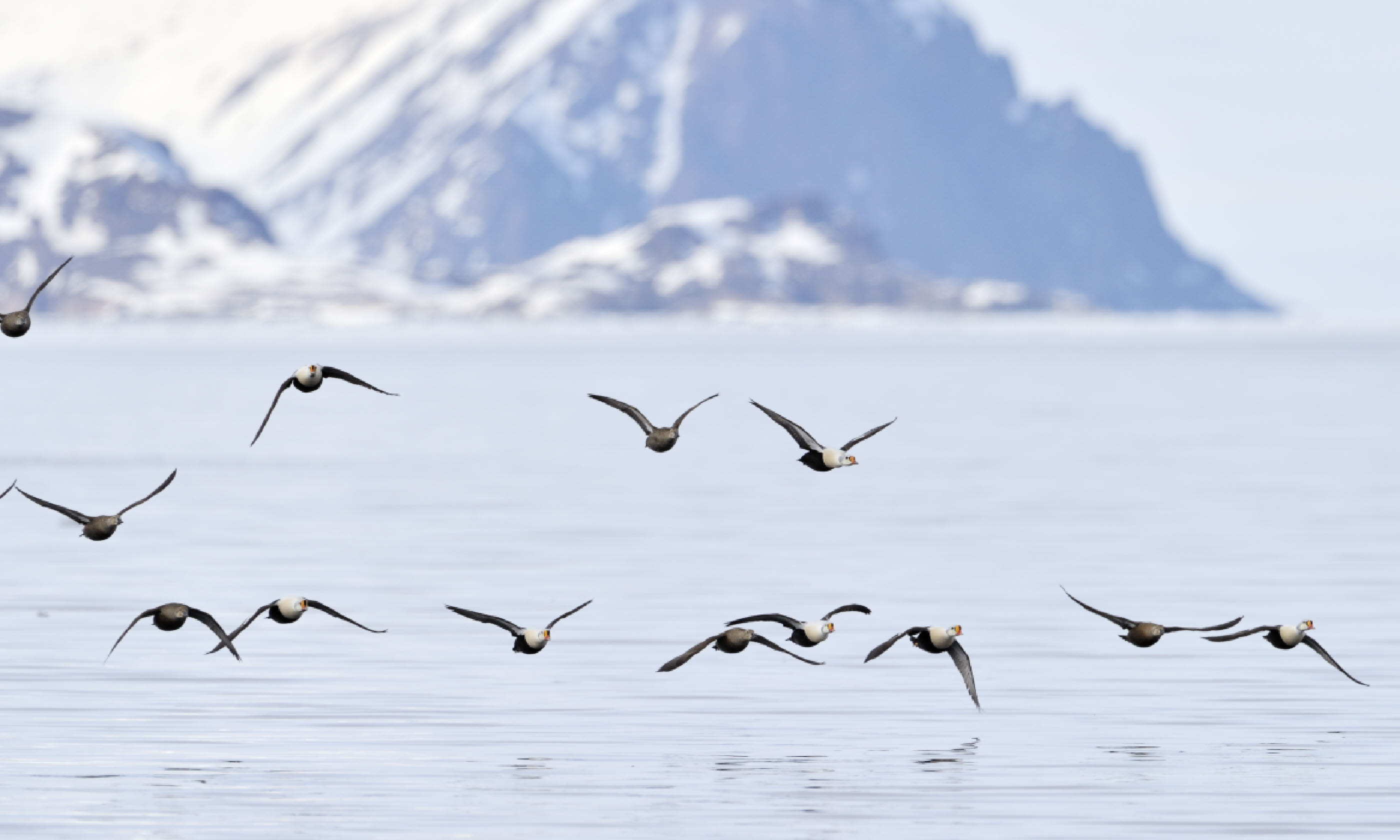
Group of King Eider, Baffin Bay (Shutterstock)
Mother Nature still had a few surprises in store for us on our final expedition. As we Zodiaced through the russet rocks of the lower Savage Islands, which slumped around us like a collapsed soufflé, a ringed seal wriggled on an iceberg and turned to look at us, its inquisitive face resembling a dog in a scuba mask. Another had not been so lucky; a polar bear emerged on an outcrop above, a bloody flipper hanging from its mouth.
Another bear joined us for the last leg of our journey, paddling furiously between ice floes as we cruised past Frobisher Bay’s dark mountains, wedged with glaciers and ice mirages that stood like skyscrapers on the horizon. Frobisher mistook this bay for the Northwest Passage in the 1570s and was thus disappointed when he reached Iqaluit, Nunavut’s capital – our final destination.
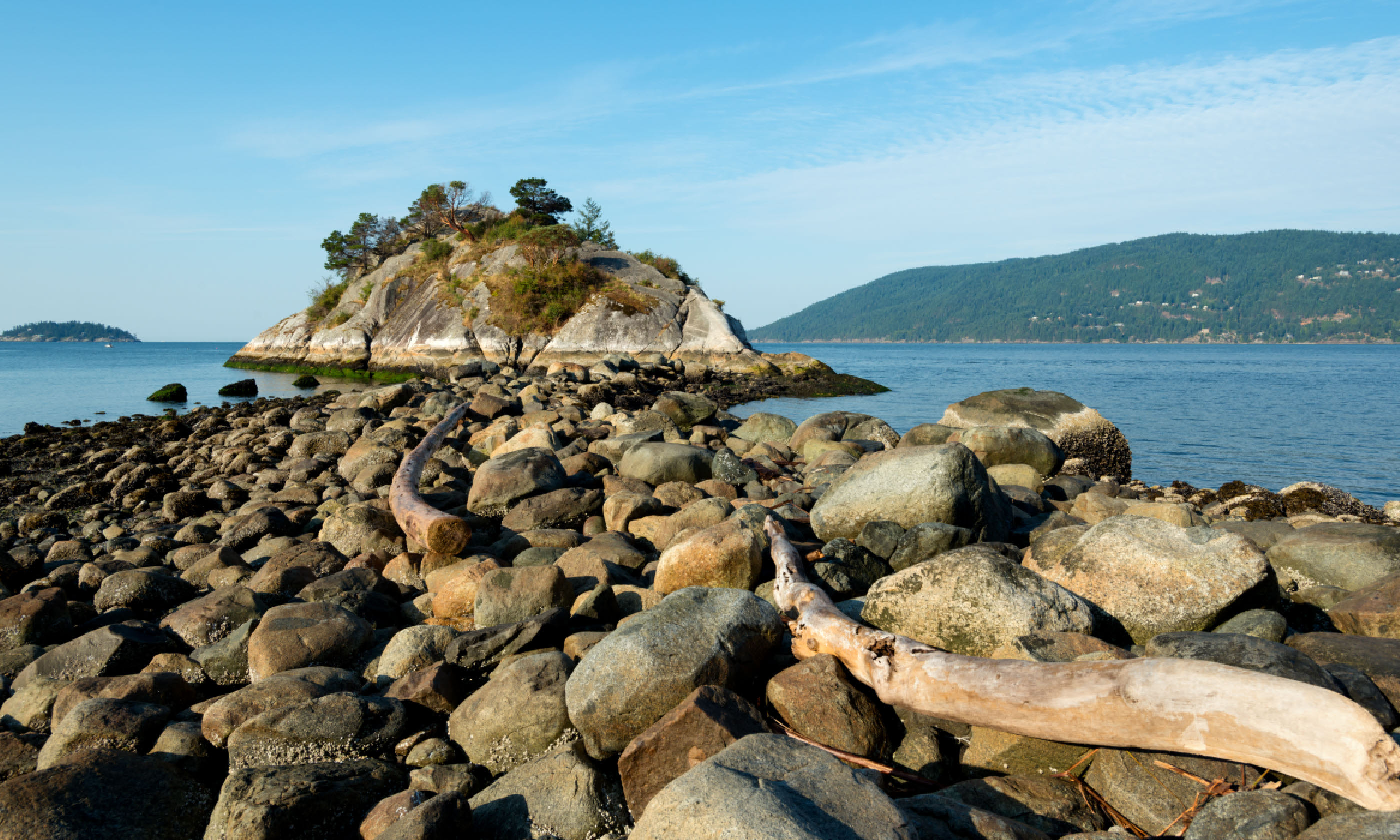
Arctic Tundra, Nunavut
At the little airport, we waited for our flight with one of the Inuit trainees, Adam. He was adamant that nothing beats caribou fur when it comes to winter camping gear, and said he’d consider using throat-singing in his metal band if they made an album. He also started to tell me about his first solo caribou-hunting trip.
“How do you track them?” I asked, picturing him eyeing footprints in the snow.
He gave me an exasperated look: “Sat nav.”
I should’ve guessed: Adam personifies the easy integration of the contemporary Inuit generation – he’s someone well connected, to both the past and the internet.
The author travelled with Cruise North